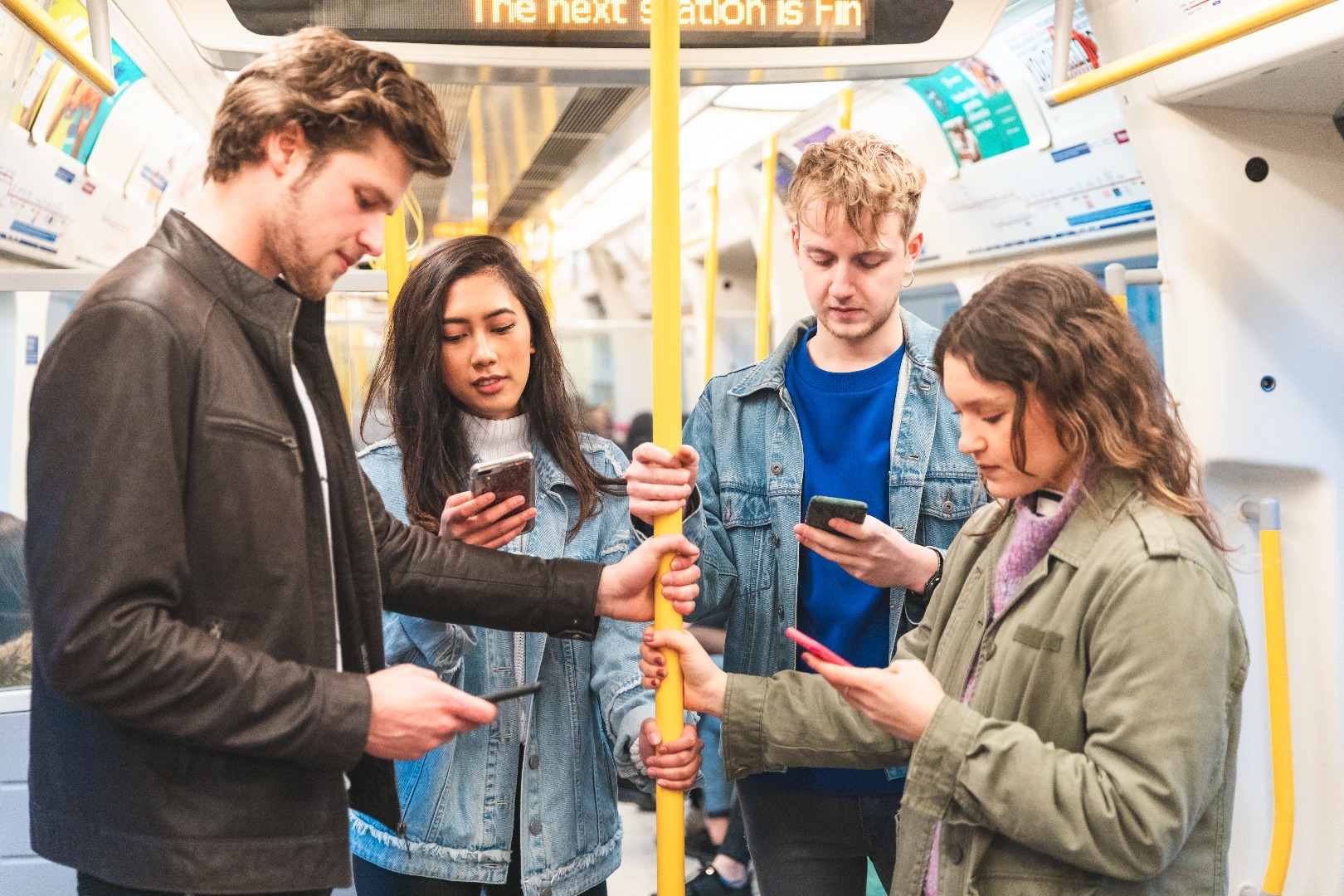Did you know that a staggering 80% of social media users exclusively access their favorite platforms via mobile devices? It’s crucial to adapt your social content to cater to the demands of today’s mobile-first consumers. In this blog, we’ll delve into the reasons behind this shift and explore strategies for optimizing your content for a mobile-first audience on social media.
Why Embrace a Mobile-First Approach in Marketing
Regardless of your industry or target audience, crafting content tailored to mobile users has become more imperative than ever. As of 2023, a whopping 99% of social media users, accounting for nearly 4.5 billion people, access their preferred social networks through smartphones. While some users still use desktop computers to check social media, approximately 80% rely solely on their mobile devices.
Neglecting the optimization of social media content for mobile users could lead to missed opportunities and decreased engagement. If your content doesn’t resonate with mobile users, it’s likely to be scrolled past, reducing its visibility in users’ feeds.
Engagement is the key to boosting the visibility of your content on platforms like Facebook, Instagram, and YouTube. Content that generates comments and reactions is more likely to appear in followers’ feeds and get recommended to non-followers. In essence, well-optimized mobile content can significantly enhance your results.
Rather than viewing a mobile-first social media content strategy as merely catering to algorithms, consider it a way to consistently connect and engage with your target audience. Naturally, audiences prefer content that’s easily consumable on mobile devices.
When developing social media content for your business, it’s essential to optimize both the text and visuals. Below, we’ll explore tactics for captions, images, videos, and stories that apply universally across all social media networks.
#1: Crafting Captivating Social Media Captions for Mobile
To capture the attention of mobile users, it’s crucial to create easily scannable social media copy.
Watch Out for the “See More” Link in Captions: Social media captions can often be quite lengthy, with space for hundreds or thousands of characters. However, it’s important to note that each social network truncates captions after a specific character count. For instance, Facebook does so at around 140 characters, while LinkedIn’s limit is closer to 100 characters. This character limit is typically applicable to the mobile app, which is often more restrictive than desktop.
One effective approach is to keep captions as concise as possible, ideally within the specified limits. This ensures that users can read the entire caption without the need to click the “See More” link. However, if you do opt for longer captions, ensure that you include a compelling hook before the text is truncated to pique users’ interest and encourage engagement.
Craft Scannable Captions: For longer captions, it’s crucial to make them easily scannable for mobile users. Break up the text with line breaks after each sentence or thought to enhance readability. While emojis can add visual appeal to posts, keep in mind that they can impact accessibility. In most cases, line breaks strike a better balance between accessibility and readability.
Create Engaging Titles for Mobile Videos: In some instances, video titles are more critical than captions, especially for mobile-optimized videos. Titles are the primary point of reference for viewers in scenarios like watching YouTube shorts. Captions may not be visible unless users actively tap to view the description box. To make your short-form video titles more compelling, aim for brevity (fewer than 100 characters) while incorporating an enticing hook that quickly summarizes the video’s topic.
#2: Designing Mobile-First Social Media Images
To optimize social media images for mobile, focus on content that maximizes vertical screen space and stands out.
Prioritize Square or Portrait Aspect Ratios: Traditional landscape images have long been recommended for social media, typically at dimensions like 1200 x 627 pixels. However, landscape images don’t make the best use of mobile screen real estate, as they are wider than they are tall. Mobile feeds are optimized for vertical images, making portrait (1080 x 1350 pixels) or square (1080 x 1080 pixels) aspect ratios more suitable. Portrait images, in particular, occupy more vertical space, making them more attention-grabbing.
Consistent Sizing for Carousels: When using carousels to share multiple images or a combination of images and videos, it’s essential to maintain a consistent aspect ratio. Mixing aspect ratios may lead to compatibility issues, especially on Instagram, where different aspect ratios can result in automatic cropping. On Instagram, you can feature up to 10 images, videos, or a blend of both in a single carousel. While square or portrait aspect ratios are ideal, choose one format to ensure a seamless viewing experience.
Consider Posting Images Instead of Links: If your business frequently shares external resources on platforms like X and LinkedIn, rethink your approach. When you add a link to a post, social media platforms generate a link preview that includes the external page’s title and featured image. However, these link previews are often not optimized for mobile feeds, as they often display landscape images that don’t maximize vertical space. To address this, consider uploading an image alongside the link, allowing you to provide information from external sites while maintaining a mobile-friendly format. Alternatively, experiment with placing URLs in comments rather than in the post caption, as captions with external URLs may have reduced reach.
#3: Tips for Crafting Mobile-First Videos
Optimizing social media videos for mobile requires careful consideration of aspect ratios, sound, and on-screen elements.
Prioritize Vertical Videos: Just like images, videos are most effective on mobile when they occupy as much vertical screen space as possible. The specific aspect ratio may vary across platforms, with Facebook supporting both portrait (4:5) feed videos and vertical (9:16) reels, while Instagram exclusively supports 9:16 videos. LinkedIn also supports 9:16 videos, but it’s advisable to experiment with 4:5 videos as well. TikTok, X, and YouTube all favor the 9:16 aspect ratio for short-form videos. Using a 9:16 aspect ratio is a safe bet when publishing video content across multiple social networks, as it offers broad compatibility.
Incorporate Text Overlays: Text overlays can make your video content more conspicuous in users’ feeds. They provide additional information that can capture viewers’ attention and encourage engagement, whether users are watching with or without sound. For 4:5 videos, you may need to add text overlays using a third-party video editing app before posting. However, for 9:16 videos on platforms like Facebook, Instagram, TikTok, and YouTube, you can conveniently add text overlays directly within the app. Videos with native elements, including text overlays, effects, and transitions, often deliver better performance.
Include Sound and Captions: Sound plays a crucial role in mobile-optimized videos, especially on platforms featuring vertical video feeds like reels, shorts, and TikTok. Content without sound may stand out in a negative way, as sound is considered standard for these formats. When creating vertical videos within native apps, you can effortlessly record voiceovers and incorporate original sound. Additionally, you can select royalty-free music from the platform’s library to enhance the audio experience. To ensure accessibility, add subtitles or captions to videos containing dialogue or voiceovers. Instagram offers a caption sticker, while LinkedIn generates subtitles automatically.
Utilize Interactive Elements: Encourage viewers to engage with your videos by incorporating interactive elements. Several social media platforms offer stickers and features that enable viewers to participate. For instance, Instagram provides poll and quiz stickers for users to respond to questions easily. Both Instagram and Facebook offer the “add yours” sticker, inviting viewers to contribute their content to a themed discussion.
#4: Crafting Mobile-Optimized Stories
While stories are inherently mobile-friendly, there are still ways to enhance their optimization, especially if you tend to create and schedule stories on desktop.
Creating Stories on Mobile: Stories are ideally suited for mobile devices, and it’s often advantageous to craft them directly within the respective platform’s mobile app. This approach allows you to add native elements that enhance engagement, such as text overlays, emoji sliders, polls, and mentions. You can also incorporate link stickers or product tags for e-commerce or external resources. Experiment with various elements to discover what resonates best with your audience, starting with low-effort stickers like emoji sliders and polls before progressing to more elaborate features like questions and “add yours” stickers.
Conclusion: Prioritizing Mobile-Optimized Social Media Content
In conclusion, adapting your social media content for mobile devices is essential for marketers across virtually every industry. By implementing the strategies discussed above, you can seamlessly integrate mobile-first copy and visuals into your social media content creation process. This approach ensures that your content not only reaches but also engages your mobile-centric audience effectively.

